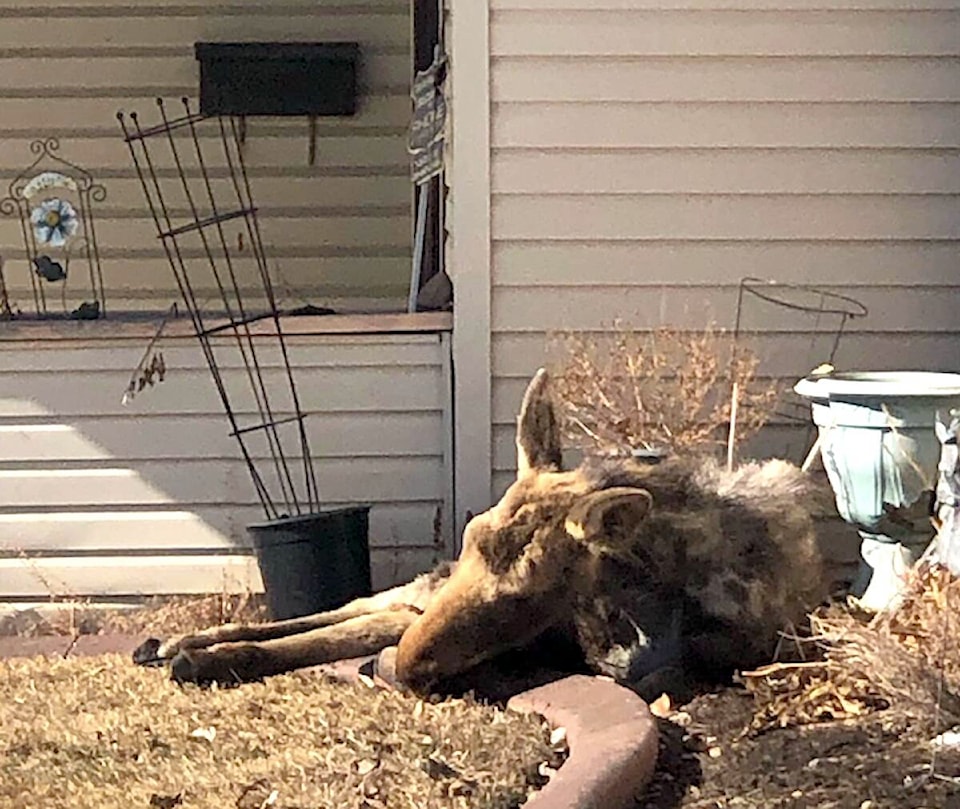Mabel the moose has unofficially joined Red Deer’s growing ungulate population, becoming the second moose that is eating its way through people’s yards.
Residents of North Red Deer have named this large moose Mabel on social media posts, which have detailed her weekly travels from Kentwood into Normandeau and Glendale.
According to the many calls of concern and photos received by staff at the Medicine River Wildlife Centre, Mable is a cow moose — much bigger and neater in appearance than the tick-bitten young moose that’s been residing over the past few weeks in East Red Deer.
The smaller moose had been raising alarm among the city’s human population because of his tattered and rather scrawny appearance.
The centre’s executive-director Carol Kelly said she has spent much time on the phone, trying to assure people that this young moose is perfectly OK.
“Two people called me saying ‘He is absolutely lonely.’ I tell them there are other moose around Red Deer. If he’s lonely he will go find them.
“Others have told me ‘He is absolutely sick.’ I say, no, he is normal. If we were to feed him we would be interfering with nature.” This would enable the young moose to stick around the city longer, where he could potentially get hurt.
Kelly doubts Red Deer’s two moose are directly related. She thinks both were likely born in the city and are, therefore, more comfortable living in this urban environment where there are plenty of berries to munch on in people’s yards, and far fewer encounters with predators.
Some city residents have suggested the moose be sedated and removed outside city limits. But Kelly said this is a “Walt Disney” view of the situation.
In reality, there’s a high chance a sedated moose will die in the process of being relocated through a phenomenon called “capture myopathy.” Kelly explained moose are high-anxiety animals and “the stress could kill them.”
It’s far better to keep away from a moose that has taken up residency in your area. They are unpredictable animals, noted Kelly. One Red Deer resident was chased up a tree by a charging bull moose last winter.
She urges Red Deerians to definitely not feed the moose or any other wildlife, regardless of how scrawny they might appear.
The tick-bitten young moose in East Red Deer looks mangy but will be rid of his winter ticks in the spring, though a natural cycle. The ticks are not dangerous to his health, said Kelly.
From his small size, she can deduce this moose has recently lost his mother, but is at the “teenage” stage and so can learn to fend for himself.
Kelly encourages people to clap their hands or make some noise if they encounter him, “and hopefully he will move back into the forest. There are lots of other moose in the area and he will eventually connect with one of them, but only with the help of everyone involved.”
As for Mabel, she’s an adult and also doesn’t need any human help.
